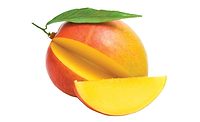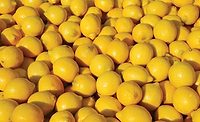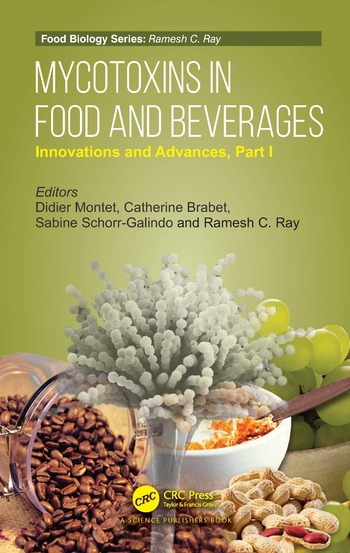Ingredient Spotlight
Consumers seeking out exotic, domestic in the name of health
Application impacts how beverage-makers utilize tropical, domestic fruit profiles

Photo by romanov from Pixabay/courtesy of Canva
In a 2016 blog article on the Harvard Health Publishing website titled “8 steps to mindful eating,” Dr. Lilian Cheung, a nutritionist and lecturer at the Harvard T.H. Chan School of Public Health, explains how the aspects that make up the practice of mindfulness also can apply to mindful eating. “In essence, mindful eating means being fully attentive to your food — as you buy, prepare, serve and consume it,” the blog post states.
As consumers become more mindful of their food and beverage choices, experts note that domestic and exotic fruits are playing a vital role in this practice.
“One of the biggest trends in the beverage industry that we see impacting the use of domestic and exotic fruits is consumers’ health,” says Don Giampetro, vice president of innovation and quality at iTi Tropicals, Lawrenceville, N.J. “Consumers are more health conscious now than ever before, especially in regards to their immune health. As a result of this, we are seeing a positive push toward utilization of more domestic and exotic fruits for their functional properties. We are also seeing that sugar consumption (added sugars versus naturally occurring sugars) and low caloric intake are another large part of the health consciousness trend.
“The current consumer immunity health trend has fast movement due to the ongoing pandemic and general consumers’ education about their health,” he continues. “Consumers are constantly searching for new ways to keep themselves, as well as their families, as healthy as possible.”
As part of the macro health and wellness trend, Giampetro explains that exotic and domestic fruit ingredients are supporting the proliferation of functional beverages.
“Exotic fruits such as coconut water, acerola, acai, guava, dragon fruit and passion fruit all contain vitamins, minerals, antioxidants, and other phytonutrients that support overall health and wellness,” he explains. “When paired with other fruits, there’s endless flavor combinations that can be made. Health shots are a great example of this. Many of the health shots in the market today combine a number of different functional ingredients to create a beverage that targets specific wellness goals such as immunity.”
Minneapolis-based So Good So You has exemplified this with its line of cold-pressed functional beverage shots. Most recently, the brand released Happy, an organic blood orange guava cold-pressed juice shot featuring the adaptogen ashwagandha, the antioxidant saffron and vitamin D.
Diving into solutions
As beverage-makers address functional beverage trends with the assistance of exotic and domestic fruits, experts detail the numerous ways in which they can be utilized.
“Beverage-makers are incorporating domestic and exotic fruits in their formulations in a variety of different ways, depending upon the application,” Giampetro explains. “Applications may include flavor blends, single flavors, natural colorants and as a general ingredient for various reasons. Domestic and exotic fruits will continue to shine in functional beverages, low-calorie beverages and low-sugar beverages. Fruits such as acerola and coconut water will continue to see an increase in the beverage industry because of their functionality.”
As hybridization permeates across the beverage market, formulators can opt to use tropical and domestic fruits in a more secondary application or as the hero ingredient.
For example, Giampetro says that dragon fruit has become a popular solution thanks to color pigments. “We see a lot of beverage-makers using dragon fruit as a natural colorant for beverages because dragon fruit is so highly pigmented and vibrant,” he says. “Dragon fruit removes the need for any artificial dyes and/or colors. Acerola is an exotic fruit that is often used as a component in a beverage because of the vitamin C content. These two fruits are used at low levels to provide color and vitamin C.”
Yet, some exotic fruits have taken on a primary role in beverage formulations as consumers have gravitated to them.
“Coconut water on the other hand, is often used at much higher levels, as either the main flavor or a secondary flavor in a blend. High levels of coconut water contribute to juice content, low sugar levels, and low flavor impact, which make blending it with other juices very practical and useful,” Giampetro says. “100% juice blends can be made at lower sugar/caloric levels with coconut water and many other named fruits, i.e., grape, apple, orange, etc.”
Various suppliers also are spotlighting tropical fruits as the new “it” flavor as they have become more accepted as the main variety source. For instance, Clearwater, Fla.-based Monin named passion fruit as the 2022 Flavor of the Year.
“Passion Fruit is full of vibrancy, from the color to the refreshing taste, and it allows people to briefly escape from reality,” said Stasha Johnston, senior vice president of marketing for Monin, in a statement. “As we enter a new year, people are craving flavors that deliver safe adventure and provide an enchanting experience, and what better than a bright flavor that makes you think of a tropical vacation?”
Monin offers four passion fruit products including Passion Fruit Syrup, Passion Fruit Purée, Red Passion Fruit Syrup and Passion Fruit Concentrated Flavor. The company adds that it has seen increasing sales traction for its portfolio of passion fruit flavorings and anticipates this momentum to continue in 2022 and beyond.
Yet, whatever exotic or tropical solution that beverage-makers opt for, iTi Tropical’s Giampetro notes the type of application ultimately determines how the fruit solutions will be featured.
“If the beverage is a cocktail, the fruit is probably not the main ingredient, but it is blended with other fruits and spirits,” he says. “If the application is more of a juice beverage, then the fruit is most likely the star of the show. The exciting thing about the beverage industry is that domestic and exotic fruits can be used in many different ways.”
Collection of benefits
With beverage formulators at no loss for tropical and domestic fruit solutions, experts highlight the ever-growing benefits these ingredients provide.
“There are a number of benefits to using domestic and exotic fruits in beverage formulations including functionality, flavor, natural coloring, etc.,” Giampetro says. “One of the greatest benefits is the functionality that fruits offer. Every fruit has a unique nutritional profile, whether it be a high level of a vitamin or mineral, low in calories, low in sugar, rich in antioxidants, etc. Those profiles can be enhanced when another fruit is added to the formulation. For example, coconut water is low in calories and sugar, but high in electrolytes, so when blended with a high brix juice, the total caloric count can be reduced and the electrolyte levels can be increased.”
As noted earlier, Giampetro explains the natural color attributes that fruit ingredients can offer. Beyond dragon fruit, he cites passion fruit, guava, and acai as having vibrant colors.
Although domestic and exotic fruits have many benefits, Giampetro details one avenue where tropical fruits have the upper hand.
“Exotic fruits also offer one benefit that domestic fruits do not ― exotic fruits are exotic,” he says. “The exotic fruits have enticing and unusual names and they are unique to specific regions in the world. With that being said, exotic fruits tend to have a stronger appeal to consumers, especially when they are blended with domestic fruits for a beverage that puts a new twist on something familiar. For the consumers that want new, but not that new, exotic fruits help bring something new to something familiar. The names alone, like passion and dragon, offer marketing opportunities for new beverages as well.”
With mindful eating and drinking on the rise, as well as the plethora of benefits that domestic and exotic fruits deliver, it suggests that the wave of 2022 new products will continue to incorporate these ingredients.
Looking for a reprint of this article?
From high-res PDFs to custom plaques, order your copy today!










